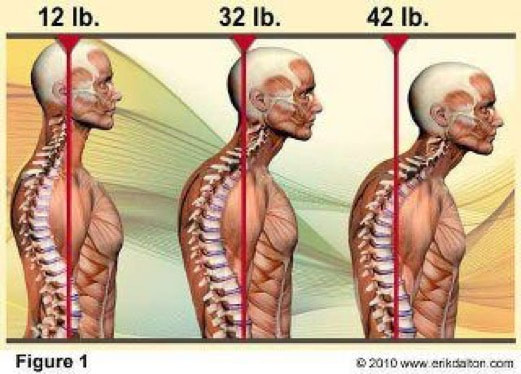About a quarter of the way into the drive, I noticed something. My head had moved far away from the headrest, and my nose was now approaching the dashboard of the car. Suddenly I couldn’t see anything in my newly adjusted mirror. Just like that, my body was reverting to the position that I thought was “normal,” with my head forward and my eyes wanting to be closer to the windshield of the car. I pulled over to the side of the road in order to give myself my full attention.
That, friends, is what the pause Alexander called “inhibition” is all about when we talk about changing physical habits. It’s important to communicate to you that the pause can also be a mental activity related to our emotions and reactions to stimuli of thought. I’ll give you another example that comes from driving.
Bruce Fertman once said to me that “your car can be your best Alexander Teacher.” I believe that’s true, and I’ve had a lot of experience playing with that idea. Driving back and forth to Philadelphia for Alexander training back then, and now driving in notorious Atlanta traffic every day, I know that I can respond in one of several ways to the stress of being behind the wheel. Road rage is a great example. When I drive, I like to give myself enough space between my bumper and the car in front of me so I can react to whatever happens and respond without slamming on my brakes. It drives me crazy when a car from a neighboring lane decides to pull in front of me and close in that gap I’ve worked hard to create. My instant reaction is often to slam on my brakes, and my body goes into adrenalin production in overdrive. Even if nothing serious happens, my body gets pretty stressed and riled up. Worse, my response to that reaction is often to get angry. Really angry. I forget I have a choice, and I yell. I call the other driver “stupid” and a variety of adjectives I don’t wish to put into print. Occasionally there’s a finger in the air, or flashing brights, or all manner of emotional response. I know I’m not the only person who has these feelings and responses – I see them (and worse) playing out every day on the highway in Atlanta traffic.
Time out for a bit of discussion on the difference between reaction and response. Reaction comes from our limbic, animal brain. The tiger is coming down the road, we produce adrenalin, we run. We get cut off in traffic, we produce adrenalin, we slam on the brakes. We are wired to keep ourselves safe and alive. We don’t have a lot of choice in this once the limbic brain takes over. BUT – we do have a choice to notice this reaction and how it feels inside ourselves – to pause, and then to choose a response that feels appropriate to the situation.
So, in that moment of pausing after slamming those brakes on, I have a mental, emotional choice in front of me. I can choose to respond in anger, with road rage. Sometimes that feels pretty good. Sometimes that’s extremely dangerous to the cars around me. Sometimes it’s downright inappropriate to the situation. (Our responses are always on a continuum – there’s the full range of that one.) On the other hand, I could choose to ignore what that person did and just let it go. I could choose to consider that perhaps they are late for work and anxious. Or on their way to visit a relative who was rushed to the hospital. Or just oblivious because they are driving distractedly. Many choices present themselves, and in the pause, I get to see them, experience the continuum, and then decide how or if I want to respond. It’s amazing how much we can consider in the split second of pausing.
When I really check in with myself in the pause, I can notice my reaction to something mental may also affect me physically. I often find that when I get angry on the road, I am gripping the steering wheel for all I’m worth. Sometimes I enjoy playing with how little effort it actually takes me to hold and turn the wheel. When this situation arises, that is often my response – can I let go of all that tension and see how little work I can make this drive? It’s amazing how that game affects my thinking and my body, too.
I hope this gives you a sense of what Alexandrian Inhibition is all about. Simply put, it’s the pause that allows us to see a range of choices in any given situation. It’s not how we resolve the situation – the actual response we choose comes under my next topic, which will be Directions. It’s hard to write about one without the other, but the pause is what comes after our physical or mental innate reaction to a stimulus. It’s what we can allow ourselves to experience before deciding on a response to a situation – a moment of freedom where many choices are possible and judgement is suspended.


 RSS Feed
RSS Feed